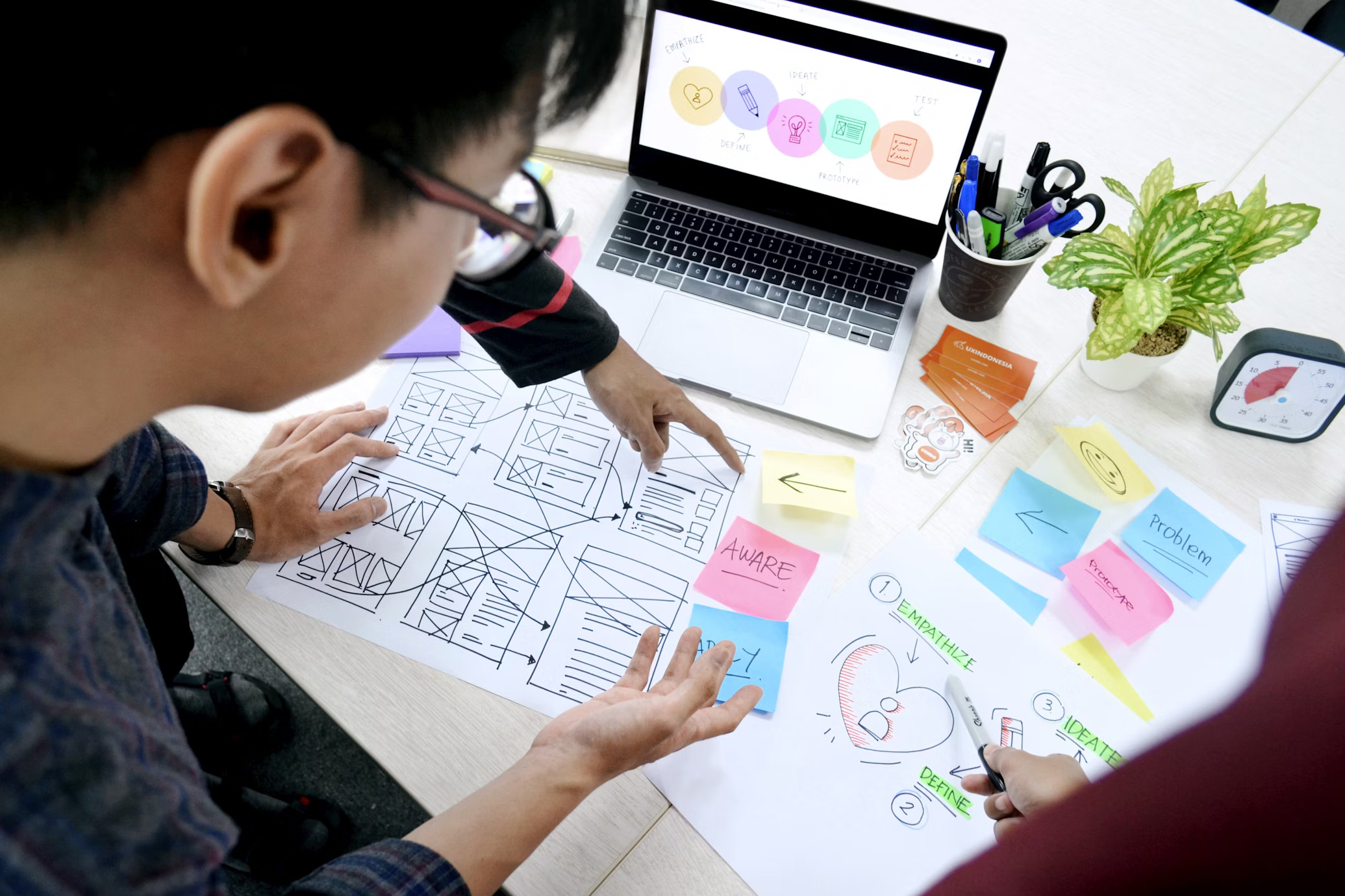A UI/UX design system is the backbone of a consistent and scalable product design process. It’s more than a set of components—it’s a shared framework that aligns designers, developers, and stakeholders. In this blog, we will explore the key components of a design system, the five essential steps to creating one, and why it’s crucial for modern product development.
Key Components of a Design System
A robust design system consists of several interconnected elements:
Style Guide
A comprehensive guide that defines the visual elements of your product, including typography, color palettes, grid systems, and spacing.
Component Library
A repository of reusable UI elements such as buttons, modals, and forms, designed for consistency and scalability.
Design Principles
Fundamental principles that guide the design process, ensuring alignment with the brand’s identity and values.
Documentation
Clear and accessible guidelines for using the design system, helping teams implement it effectively.
Tools and Resources
Platforms like Figma, Sketch, or Storybook to design, document, and maintain the system.
5 Steps to Building a UI/UX Design System
Creating a design system is essential for ensuring consistency, scalability, and efficiency in product design. In this section, we explore the five key steps to building a design system: Discover, Research, Ideate, Design, and Test.
Step 1: Discover
The discovery phase is all about understanding the need for a design system and defining its purpose.
- Identify Pain Points
Evaluate your current design and development processes. Are inconsistencies causing delays? Is scaling the product challenging? Pinpointing these issues is crucial.
- Understand Stakeholder Goals
Engage with designers, developers, and business teams to understand their challenges. Align their goals with the purpose of the design system.
- Set Objectives
Clearly define what you aim to achieve. For example, you may want to improve team collaboration, ensure design consistency, or speed up development cycles.
- Outcome
A clear understanding of why the design system is needed and what success looks like.
Step 2: Research
Research provides the foundation for your design system by gathering insights and benchmarking against best practices.
- Audit Existing Assets
Conduct a comprehensive design audit to catalog current UI components, typography, and color schemes. Identify inconsistencies, redundancies, and areas for improvement.
- Study Industry Best Practices
Analyze existing design systems like Google’s Material Design, IBM’s Carbon Design, or Airbnb’s Design Language to learn what works.
- Understand User Needs
Conduct user interviews and usability testing on existing designs to identify pain points and areas for improvement.
- Outcome
A thorough understanding of your current design landscape and user requirements, along with inspiration from successful systems.
Step 3: Ideate
The ideation phase is where you plan the structure and vision of your design system.
- Define Design Principles
Establish principles that reflect your brand’s identity and values. For example, you might focus on simplicity, accessibility, or innovation.
- Prioritize Components
Identify the most critical components to include initially, such as buttons, navigation menus, and input fields. Start with high-impact elements.
- Plan for Scalability
Ensure the design system can grow with your product by adopting modular design patterns and consistent naming conventions.
- Outcome
A strategic blueprint for your design system that includes principles, prioritized components, and a vision for scalability.
Step 4: Design
This is the execution phase where your design system takes shape.
- Create a Style Guide
Develop guidelines for typography, color palettes, spacing, and grid systems. These elements should align with your brand identity and ensure visual consistency.
- Design Core Components
Build reusable components such as buttons, cards, modals, and form fields. Ensure they are responsive and accessible.
- Document Everything
Use tools like Figma, Notion, or Storybook to document your design system. Include detailed usage guidelines, examples, and best practices for each component.
- Outcome
A cohesive, visually consistent design system that is well-documented and ready for implementation.
Step 5: Test
Testing ensures your design system is functional, user-friendly, and adaptable.
- Validate with Users
Test your components with real users to ensure they meet usability standards and address user needs.
- Collaborate with Developers
Work closely with developers to test the design system in a live environment. Address any technical challenges and ensure seamless integration.
- Iterate Based on Feedback
Gather feedback from all stakeholders, including designers, developers, and users. Use this feedback to refine and improve the system.
- Outcome
A thoroughly tested and validated design system that is ready for implementation and continuous evolution.
Conclusion
Building a UI/UX design system is more than just creating components—it’s about fostering collaboration, ensuring consistency, and delivering an exceptional user experience. A complete design system incorporates style guides, reusable components, design principles, and robust documentation.
By following these five steps—Discover, Research, Ideate, Design, and Test—you can create a design system that scales with your product and meets the needs of both users and stakeholders.
Start small, iterate often, and remember: a great design system is a living, evolving resource that grows alongside your product and team.

